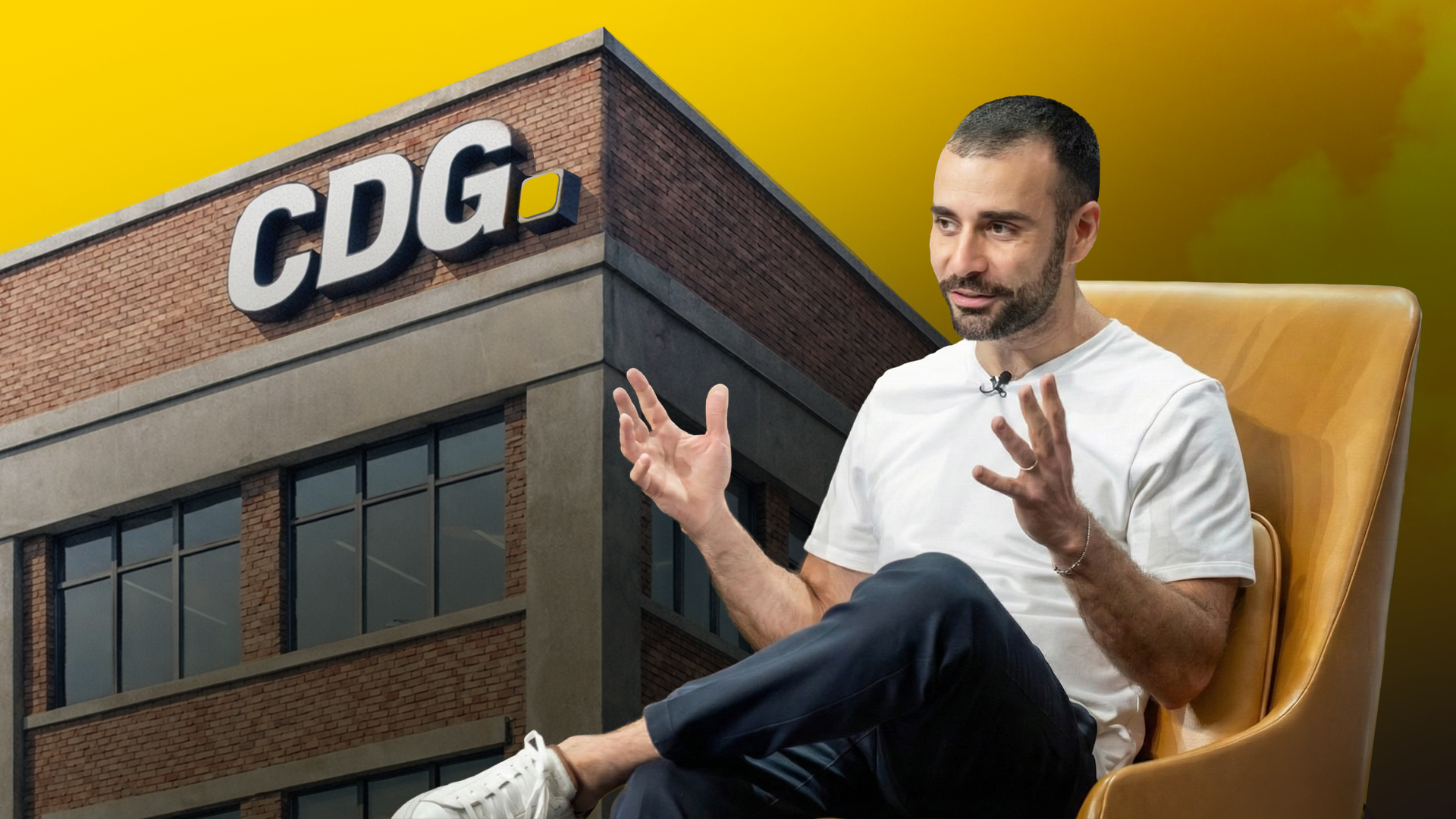Hello from Las Vegas, where the NADA Convention is kicking off today. It’s a huge week for CDG: First, I just launched my new website as a home base for all things CDG now offering a ton of services—you can find a job, research deals, sell your car, access refinancing tools, get merch, and so much more.
And? I’m premiering my documentary here at NADA tomorrow. It’s been a long time coming. I’m excited to meet so many of you face to face for the first time following the premiere (more details here).
What a week. Let’s get after it.
—CDG
First time reading the CDG Newsletter? Subscribe here.
Today’s Biggest News
EV News Roundup: Making Sense of Wild Headlines
Not too long ago, EV headlines all looked the same: “[Insert major manufacturer here] invests billions in electric manufacturing.” But today, things are far less simple…
You see things like “Industry pain abounds as electric car demand hits slowdown” and “Dealers Want to Hit the Brakes on EVs.” But also “Tesla Model Y to be crowned world’s best-selling vehicle of 2023.”
So what are we to make of the current state of electrification, given that plenty of smart people in the auto industry went all-in on EV tech only a few years ago? Let’s run through the recent headlines to get a better feel for what’s really driving the auto market today.
The headline: EV growth is slowing, which means level setting is in order.
“It's true, the pace of EV growth has slowed, which has created some uncertainty,” GM CEO Mary Barra said during the company’s earnings call earlier this week. “We will build to demand.”
And though Barra said she was “encouraged” by industry forecasts that US EV sales could rise at least 10% this year from about 7% in 2023…demand growth is flattening.
But it’s not just GM, which previously cut EV production targets due to slowing demand, that’s doing some recalibrating:
Ford pulled back on EV production due to lackluster growth rates, and it cited changing market demand as the reason for cutting 1,400 jobs at its Dearborn, MI, plant where Ford builds the F-150 Lightning electric pickup.
Just last week, Tesla warned of a sharp slowdown in sales growth this year (and investors responded by shaving $80 billion from Tesla’s stock valuation the next day).
And suppliers have been impacted, too. For example, China’s CATL, the world's largest EV battery maker, predicts 2023 profit growth will come in considerably lower than the previous year thanks to slowing demand and increasing competition. Fellow battery heavyweights BYD and LG Energy Solution echoed similar sentiments.
For reference: This data from Cox shows what percentage of top brands’ total sales were EVs in 2023. Even leading the pack among non-EV exclusive manufacturers, BMW attributed just 12.5% of sales to EVs last year.
Via Cox
My POV: EVs have proven to be demand-driven.
Billions in investment from major manufacturers, tons of new electric models hitting the lot, and EVs still only represented 7.6% of the total US new vehicle market last year. You can lead a horse to water, but you can’t make it drink.
And you can’t make drivers choose EVs, especially with range anxiety and a recently proven lack of battery resilience at low temperatures. Simply put, it’ll take time for drivers to make the jump to EVs.
But auto manufacturers have so far been unable to accurately predict when that jump will happen. So they’re left in the position of letting the market lead them (and their multi-billion-dollar manufacturing businesses)—and that’s scary stuff.
So who survives this bumpy path toward the future? It’s the most nimble manufacturers. Those that can manage two very different product lines at a high standard. If they can 1) juice as much profit as possible from their traditional, money-making internal combustion businesses and simultaneously 2) plan for an electric future…they might make it out alive.
“We know the EV market is not going to grow linearly,” GM CFO Paul Jacobson said this week. “We are prepared to flex between ICE and EV production.”
But it’s tough to steer in two directions, and I think it’s possible we’ll see more failure than we do success in the short-term.
The headline: The Tesla Model Y is the best-selling vehicle of 2023.
Preliminary data suggests Tesla is taking the crown from Toyota with 1.23 million units sold between January and December 2023…a 64% increase annually.
Via JATO
My POV: Based on the data… People don’t want “EVs.” They want hybrids or Teslas.
Hybrids are still the most under-hyped vehicles, based on the data. Consumer adoption has been climbing. Market share has grown to 11.4% from 6.5% since last year (while EV market share has grown at only about 20% of that rate).
It’s no surprise that Tesla will keep winning EV market share. Legacy manufacturers need to realize their only course of survival in EVs is focusing on hybrids—that is what consumers want (if they aren’t in Tesla’s target market, that is).
Time and again, we see that households with gasoline internal-combustion engine vehicles are more likely to migrate to hybrids than EVs.
Via S&P
The headline: Dealers are asking Washington to slow down.
Owners from thousands of dealerships sent a second open letter to the Biden Administration last week petitioning the President to slow down the legislative push for more EVs.
The dealer POV: Dealers who signed the letter appear to be concerned about getting stuck with too much EV inventory on their lots with no interested customers (again, demand issue). FYI, federal and state targets could require a minimum two-thirds EV share of the US market by 2035.
The view from D.C.: Legislation like the Inflation Reduction Act hopes tax credits for consumers and mandates for dealers can quicken the transition to emission-free electric models.
I suspect the tension between dealers and legislators will be a key undertone at the NADA Conference this week. I’ll keep you posted.
My POV: There’s more than one way to move units.
We might be poised for an influx of used EVs right when the market needs them most. Dealers (even frustrated ones) who can time that wave of used EVs might be able to capture sales.
Hear me out: EV leasing is getting more popular—EV leases rose from 8.6% of all EV sales at the beginning of 2023 to 23.9% by the end of the year, according to Cox Automotive. And experts have that stat on track to grow to 25% this year.
It’s unlikely that all of those leaseholders will buy their vehicles when their leases are up after the standard 36 months. So there’s a decent chance a big chunk of those EVs end up on lots as used inventory come 2026.
And used EVs might ratchet up adoption across the board—even if determining residual value is tough (thanks to the difficulty of predicting remaining battery capacity without an industry-wide standard), nothing gets a driver behind wheel like a good deal.
This Week’s Episodes of the CDG Podcast
This one has it all: A leader who went from porter to GM in just 6 years. A strategic conversation about solving the aging used car bubble. Notes on how accurate appraisals have saved dealers $48 million. It all went down on the CDG Podcast with Brian Kramer, EVP of Cars Commerce. Check it out here.
I don't say this lightly: this is a must-listen. I sat down with Doug Eroh, President of Longo Toyota and the world’s No. 1 Toyota dealer to learn all of his leadership secrets, from selling 25K cars a year to developing a hybrid strategy and so much more (including his prediction of another used car shortage). You’ve gotta hear this one.
Listen to the episode here, and subscribe to the CDG Podcast on Apple, Spotify, or wherever else you get your podcasts. And thank you to Valvoline, Cars Commerce, Fullpath, and AutoFi for making this content possible.
Together with

Sure, you recognize the name. But did you know Valvoline is so much more than just a lubricant supplier?
For its dealership customers, Valvoline is an integral part of their business. Valvoline supplies world-class products…but also provides hands-on training and expertise, service lane technology, service advisor sales training, marketing support and promotions, and a full portfolio of lubricants and preventive maintenance chemicals.
This means Valvoline provides more value than a typical supplier, allowing dealers to consolidate their fixed-ops vendors and suppliers and focus on moving their business forward.
The Backlot
Stream and DealerOn just announced a strategic alliance. This should make it leaps and bounds easier for dealers to access actionable, innovative marketing solutions—cool stuff.
GM profits grew in 2023, despite strike impacts and losses at its Cruise AV business.
Toyota notched all-time highs in sales and production in 2023 (even if days’ supply is still on the low end).
So you want to become a successful franchised new car dealer? I’ve got you.
Thanks for reading. BTW - If you’re in the car business, make sure to follow my second Twitter (X) account, @dealership, for more in-depth and niche insights that are likely not as relevant to the masses or people not in the business.
Have a good one—see you next time.
—Car Dealership Guy
Did you like this edition of the newsletter?
Want to advertise with CDG? Click here.
Want to be considered as a guest on the CDG podcast? Right this way.
Want to pitch a story for the newsletter? Share it here.










